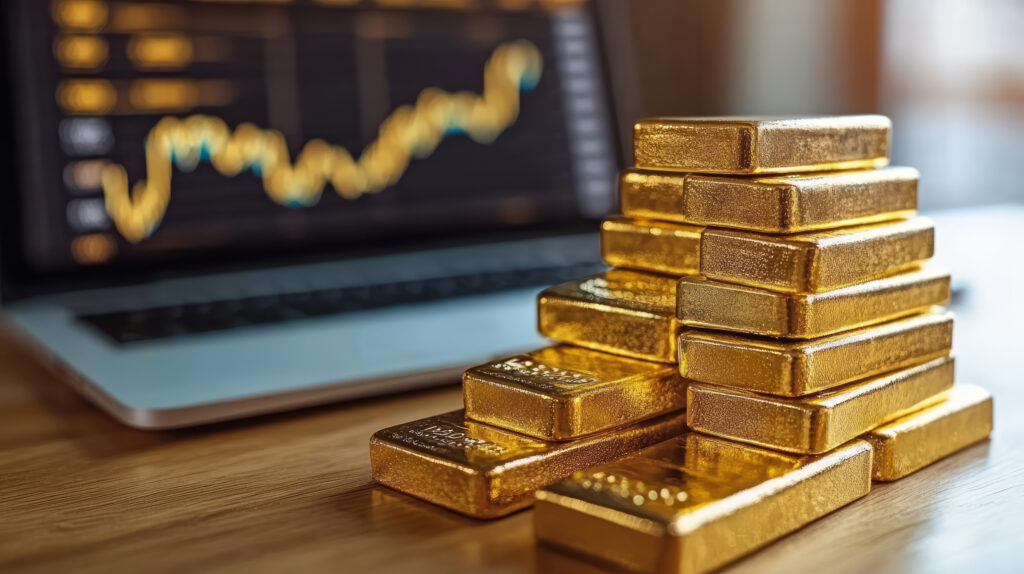Introduction
Gold has once again captured global attention — reaching notable price levels and prompting renewed discussion among market analysts and investors. With every rally, the same question emerges: Has gold reached its peak?
It’s a valid concern, especially for those considering gold as part of a diversified portfolio. But assuming the rally is over without examining the broader landscape could result in missed opportunities.
In this article, we’ll explore five factors currently influencing the gold market, many of which suggest continued long-term demand. While no one can predict the future with certainty, understanding these dynamics may help investors make more informed decisions.
This article is provided by Allegiance Gold for educational purposes only and should not be interpreted as investment, tax, or legal advice. Please consult a licensed financial advisor or tax professional before making any investment decisions.
1. Gold Often Responds To Financial System Stress – Not Just Inflation
Gold is frequently viewed as a hedge against inflation, but that’s only part of the picture. In recent years, broader concerns about financial system stability have also contributed to gold’s appeal:
✅ Rising global debt levels.
✅ Geopolitical tensions and uncertainty.
✅ Questions around central bank policies and credibility.
When confidence in traditional institutions weakens, demand for perceived “safe-haven” assets like gold historically increases. That demand can remain elevated even in periods of moderate inflation.
⚠️ Historical performance is not a guarantee of future results.
2. Central Bank Demand For Gold Remains Strong
According to public data from institutions such as the World Gold Council, central banks worldwide continued to purchase significant volumes of gold in 2024 — often citing diversification and reserve stability as primary motivations.
Gold’s relative independence from any single currency or government has made it attractive to many sovereign entities seeking long-term stability in their reserve portfolios.
⚠️ These decisions are based on individual country strategies and may not reflect the performance expectations of retail investors.
3. U.S. Dollar Strength Masks Broader Currency Risk
While the U.S. dollar remains strong on foreign exchange markets, several global economic shifts have raised questions about long-term reliance on the dollar as a reserve currency:
✅ Increased interest in multi-currency trade arrangements.
✅ Rising U.S. sovereign debt.
✅ Broader geopolitical fragmentation.
If global diversification away from the dollar continues, it could potentially increase demand for non-currency-backed assets — including precious metals.
⚠️ Future outcomes depend on a variety of unpredictable economic and political factors. Diversification does not ensure a profit or protect against loss.
4. Physical Gold Market Trends Show Persistent Demand
Beyond futures trading and market speculation, the demand for physical gold remains strong. Reports from mints and retailers suggest that investor interest in bullion products continues to grow.
Meanwhile, mining production has seen only modest growth in recent years, partly due to supply chain issues and regulatory constraints. This supply/demand imbalance has, in some cases, contributed to premium pricing on certain gold products.
⚠️ Keep in mind that physical precious metals may involve unique risks such as storage, insurance, and liquidity considerations.
5. Market Corrections Don’t Necessarily Signal a Long-Term Risk
Gold, like all assets, is subject to market fluctuations. Temporary corrections are normal and have historically occurred within longer upward trends.
Some analysts believe that current economic and geopolitical conditions may support continued interest in gold over the long term. However, no trend continues indefinitely, and past performance is not indicative of future returns.
Investors should always consider their time horizon, risk tolerance, and diversification strategy before making allocation decisions.
Final Thoughts
Markets are complex, and gold is no exception. While recent price increases may cause some to question the asset’s future trajectory, a closer look reveals that many of the drivers behind gold’s strength — including institutional demand, global instability, and fiscal uncertainty — remain active.
That said, gold is not without risk. Prices can be volatile, and precious metals should be viewed as one component of a well-diversified strategy, not a standalone solution.
So, has gold peaked? While no one can say with certainty, current conditions suggest the story may be far from over.
Disclaimer: This material is provided by Allegiance Gold for informational and educational purposes only and is not intended as investment, legal, or tax advice. Allegiance Gold is not a registered investment advisor or broker-dealer. Investing involves risk, including the potential loss of principal. Past performance does not guarantee future results. All investors are strongly encouraged to consult with a qualified financial advisor or tax professional before making any financial decisions.
To Start Your Gold IRA Today:
Download Your Free Gold IRA Guide | Open Your Gold IRA Account | Book Your Consultation
Protect your financial future with Allegiance Gold an Inc 5000 company– Your trusted partner in Gold and Silver IRA investments.
Act now and join the millions who trust gold to secure their wealth.

